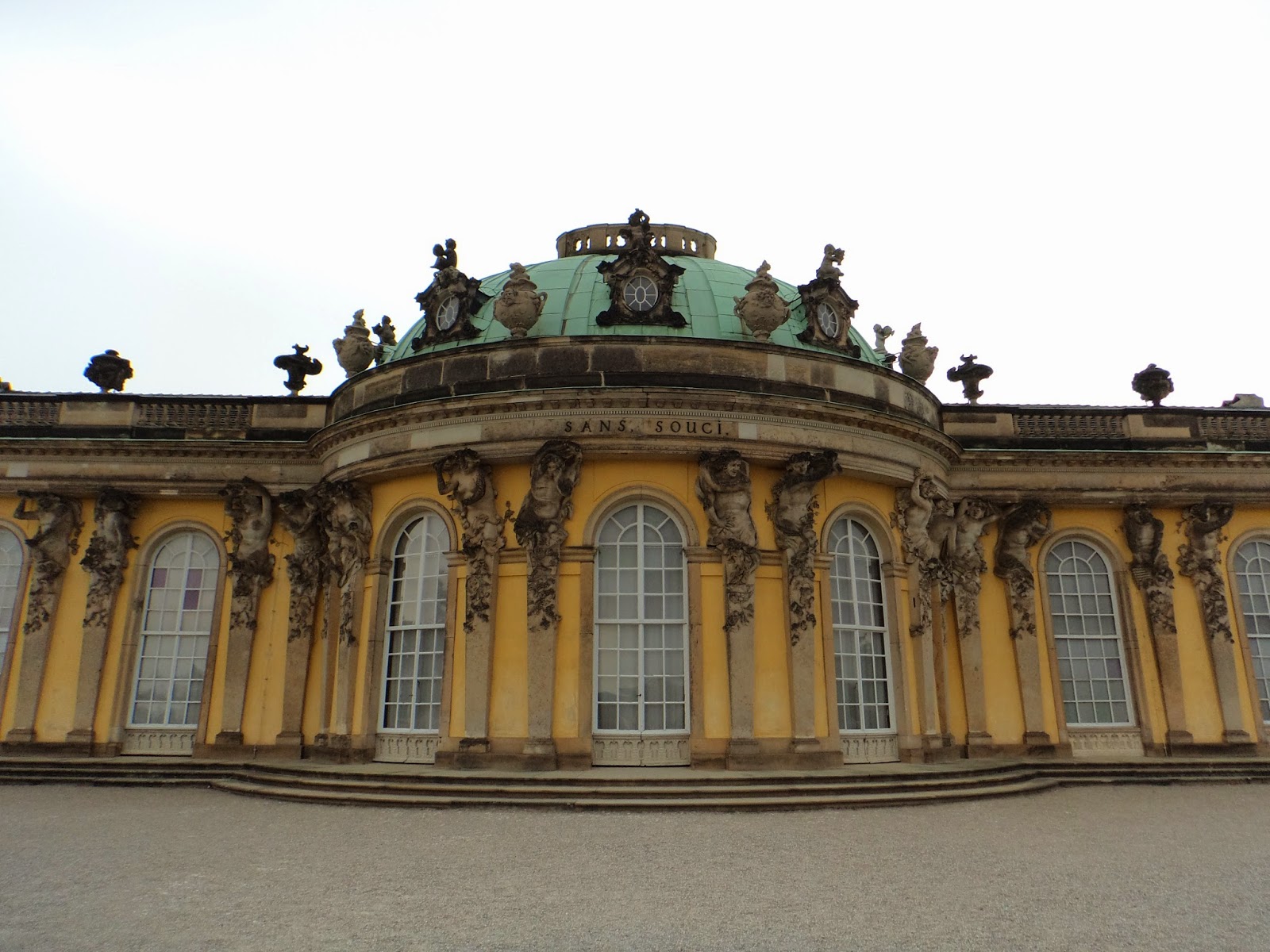I flew to Berlin where Dr. Gerd Helle picked me up and
brought me out to Potsdam to visit the GFZ Dendrochronology Laboratory which is
part of the Helmholtz-Centre Potsdam - GFZ (GeoForschungsZentrum literally
translated to GeoForest Center) German Research Centre for Geosciences (http://www.gfz-potsdam.de/en/research/organizational-units/departments/department-5/climate-dynamics-and-landscape-evolution/infrastructure/dendrochronology-laboratory/
- see a later post on the dendrochronology lab).
Potsdam is about 45 minutes west of Berlin and is a city that
is full of historical structures. One of my first experiences in Potsdam was to
cross on a small car ferry across a river to get to the small town where Gerd
lived. This was a very nice local neighborhood that was close to the water and
also had a large glacial moraine that you could hike up and obtain views around
the town.
We took a nice walk around the town before dinner. We could see
an old hotel across the lake which was a beautiful view and would be a
wonderful place for a conference.
We crossed a bridge with lover’s locks on the grid wall similar
to what I saw in Venice.
The city has an Egyptian Obelisk replica that was built in
the 18th century which was covered in hieroglyphics that were
created by the artist before that language had been deciphered so it is just a
random collection of symbols.
We visited the Sans Souci which was constructed for
Frederick the Great by Georg Wenzeslaus von Knobelsdorff between 1745 and 1747.
Knobelsdorff was fired at the end of the project and the Dutch Architect Jan
Bouman completed it in the 19th century.
It had beautiful and extensive formal grounds and I was most
impressed by the terraced gardens and the citrus house on the premises.
The terraces supported vineyards.
They had many water features throughout the grounds that
included fountains and they had some resident wood ducks as well.
The burial for Frederick the Great, the King of Prussia is
located here. He was known for bringing potatoes to Germany as an agricultural
venture which was accounted as a great boon and helped stave off starvation
during hard times. Because of this, they put potatoes on his grave stone.
They developed a caricature of an Asian pagoda with what
they thought portrayed the life and people of Asia.
They had a functional Dutch windmill on the site which still
turns. I appreciated this nod towards alternative energy.
We visited the Cecilienhof which was commissioned by Emperor
Wilhelm II for his son (Wilhelm) and his wife the Duchess Cecilie of
Mecklenburg-Schwerin whom it was named after. The structure was completed in AD
1917 and they moved in immediately. It became part of the Potsdam and Berlin
UNESCO World Heritage Site in 1990.
Cecilienhof is famous for hosting the Potsdam Conference in
1945 where the leaders of the United Kingdom Prime Minister Winston Churchill),
United States (President Henry Truman), and the Soviet Union (Josef Stalin).
The Cecilienhof also had a small house called the Hermitage that
was paneled on the outside with the bark of an oak tree.
The central outdoor entrance way to Cecilienhof had a wood
floor that where cross sectional ends of 3 inch by 3 inch oak beams where you
could see the rings.
Potsdam had one of my favorite graffitied walls that I saw
through all of Europe. This was right across from my hotel which was walking
distance from the city center. The hotel was an old house which was very nice
and had a wonderful breakfast.
I also had the pleasure of observing a true-to-life chimney
sweep at his work just like out of the Mary Poppins movie. I found out from
Gerd that it is a law that you have to have your chimneys swept by a chimney
sweep every year and that you also are obliged to pay them for the service.
Potsdam is in the province of Brandenburg and has a
Brandenburg gate that was built in AD 1770 at the entrance to the old city. The
Brandenburg Concertos by Johann Sebastian Bach were composed (and modified from
earlier work) for Christian Ludwig who was the Marguess of Brandenburg and the
younger brother of King Frederick I of Prussia. This piece was dedicated in AD
1721. I was excited to visit the Provence of Brandendurg as these are some of
my favorite pieces of music. I was surprised that the two young East German
dendrochronologists that were my friends and guides around Berlin did not know
of the Brandenburg Concertos (what are they teaching young people these days?).
I had a wonderful evening walk through the old city of
Potsdam which was first established in the 7th Century AD but established
its first town charter in AD 1345. I walked through the old city streets to the
Saint Peter and Paul Catholic Church which was constructed by AD 1870 and took
pictures of their graveyard and the flower lined paths behind the church.
I was also interested to see that the city had apparently
erected some boards for the work of graffiti artists which I thought
complimented the old church spire as a nice juxtaposition of different times.
I ended the evening with a nice dinner of a fish cake and
white asparagus which was a seasonal specialty of the area at a nice little
outdoor restaurant in view of the Brandenburg gate.
































No comments:
Post a Comment